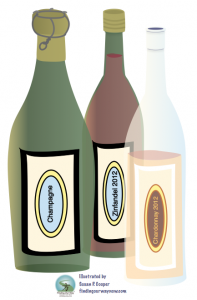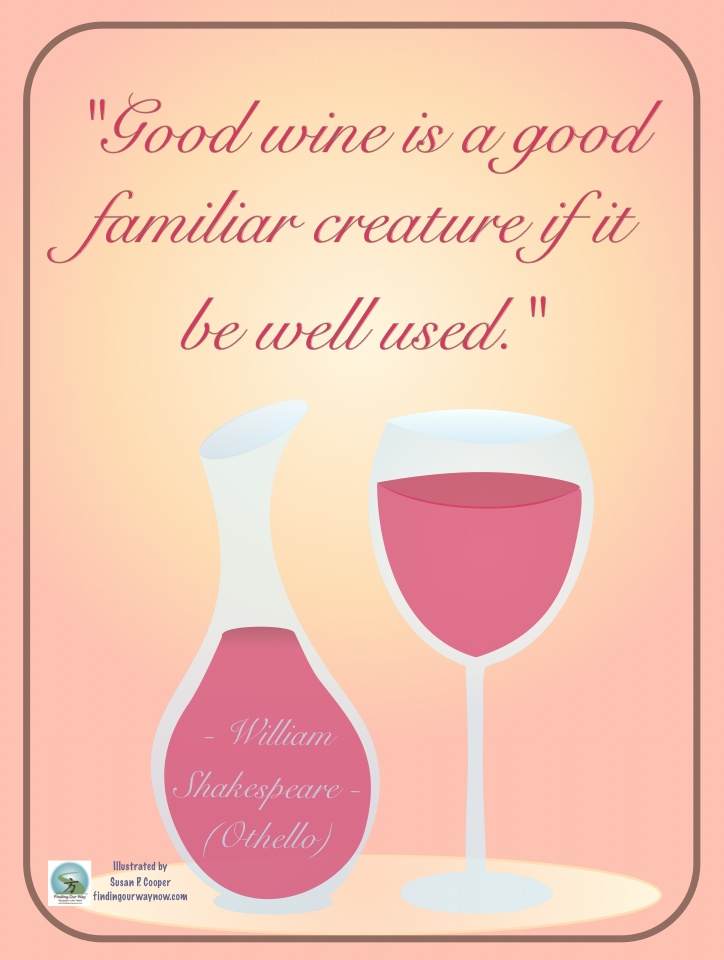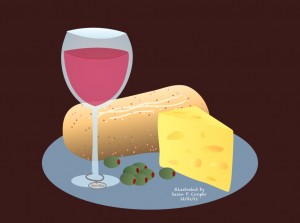So what are the basic wine terms and definitions? First of all I’m not a wine expert. Nevertheless, I/we often hear wine terms and definitions, bandied about when someone is talking about wine. But what do they mean? Some of the terms are more obvious, where others aren’t as much.
To dispel the confusion and help you sound like and be a little bit more of an expert, I thought I would compile a short list of some of the most common terms. I hope you’ll find this helpful.
Basic Wine Terms and Definitions:
Aroma – This refers to the smell of wine. Note: there are an unlimited number of aromas in wine and just as many descriptive adjectives for these aromas.
Bouquet – This refers to all the aromas in each wine, collectively making up a bouquet of flavors.
Balanced: Wine that incorporates all its principal components: tannins, acid, sweetness, and alcohol in a way where no one single characteristic stands out. You look for the texture, weight, and the balance of acid, alcohol, fruit and tannins in the wine.
Body: This describes the sensation of the alcohol in the wine and the how it feels in the mouth. Particularly how the fullness or density of a wine feels in your mouth; whether it feels light or heavy.
Buttery: Generally associated with Chardonnay, it describes a wine that’s been aged in oak, generally is rich in text and color with less acidity. A buttery wine often has a cream-like texture giving the sensation of butter or oil on your tongue with a smooth finish.
Dry – One of the most common wine definitions. It means it has little to no sugar left in the wine after fermentation.
Finish – This is the impression of textures and flavors that linger in the mouth after a wine has been swallowed.
Fruity – This is a tasting term that signifying wines that exhibit strong smells and flavors of fresh fruit. This term can also describe aromas of cooked fruit, as in “jammy”.
Harsh: Similar to “coarse” but usually used in a more derogatory fashion to denote a wine that’s unbalanced with too much acid or tannins. It can also be described as a rough and biting wine. These wines, generally speaking, lack fruit.

Legs – Describes the tracks of liquid that clings and runs down the side of to the sides of a glass after the wine has been swirled. Often said to be related to alcohol or glycerol content of a wine. It also may be referred to as “tears”.
Mouth-feel – This refers to how a wine feels in one’s mouth. For example, it may refer to the feeling in the mouth of rough, smooth, velvety or furry.
Nose – This refers to how a wine smells. A tasting term describing the aromas and bouquets of a wine.
Oak/Oaky – This is a tasting term denoting smells and flavors of vanilla and toast.
Robust: A term more commonly applied to older, mature wines, where aggressive tends to describe younger wines.
Sweet – Sweet is often confused with fruity. Sweet indicates the presence of residual sugars, left over when the grape juice is converted into alcohol. Some dry wines have an aroma of sweetness that, in reality, comes from ripe fruit flavors.
Tannin – This refers to the phenolic compounds from the grapes’ skins, seed, and from the vine stems and wooden barrels that give the wine a bitter, dry or puckering feeling when you drink it, most often found in red wine.
Varietal – Wine that is created from one dominant grape variety usually stated on the label.
Vintner – This means wine maker
So the next time you hear someone use these wine terms and definitions, don’t feel intimidated. Chime in and give them your thoughts. You may just find that they’re probably feeling the same way.
If you are looking for an excellent wine resource, check out the Wine Bible by Karen MacNeil. Enjoy!
Time for a glass…
If you enjoyed reading this post about wine terms and definitions, check out A to Z Wine Definitions, Taking The Mystery Out Of Wine Tasting and Wine & Cheese Pairings: The Perfect Pairs.
P.S.: Check out a few of my favorite wine tools and resources below. 🙂

